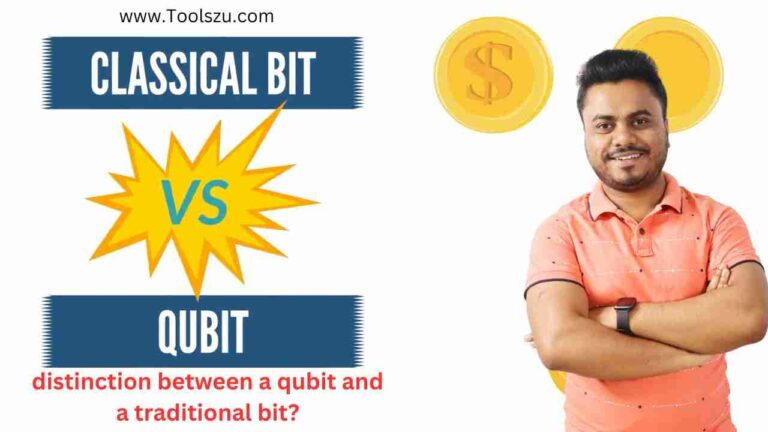A classical bit is a unit of information that has only two possible values: 0 or 1. A classical bit is a physical object or system that can be in two different states, such as a switch, magnet, or voltage.
A qubit is a sort of quantum information with more than two possible states. A qubit is a quantum system that exists in two or more states, such as an electron, a photon, or a superconducting circuit. A qubit can also be in a superposition of two states, which means it can exist in both with a certain probability.
The main advantage of qubits over regular bits is their ability to do particular computations much faster and more efficiently. For example, qubits can factor massive numbers, simulate quantum systems, and optimise challenging problems in a fraction of the time that classical bits would.
However, qubits have some disadvantages, such as being particularly sensitive to noise and interference, necessitating very low temperatures and high vacuum conditions, and being difficult to monitor and maintain.
How can I create a qubit?
A qubit is a sort of quantum information with more than two possible states. Atoms, photons, superconductors, and nanowires are examples of physical systems with several energy levels. To create a qubit, you must be able to control, manipulate, and measure the energy levels.
There are various approaches to producing a qubit, each with advantages and disadvantages. Some of the most prominent methods are:
Ion trap qubits: These are qubits composed of two internal energy levels of a loaded atom, or ion, that are trapped by electric fields. Laser beams are used to prepare, manipulate, and read qubits. Ion trap qubits are incredibly stable and capable of communicating over long distances, but they are also susceptible to noise and require complex laser systems.
Superconductor qubits: These are qubits made from two states of a superconducting circuit, which is a loop of metal with no electrical resistance at extremely low temperatures. Microwave pulses control and measure qubits. Superconductor qubits are fast and scalable, but they are extremely fragile, requiring very low temperatures and high vacuum conditions.
Photonic qubits: These are qubits made up of a photon’s two popolarization states. Optical equipment used to modify and test qubits includes mirrors, beam splitters, and detectors. Photonic qubits are powerful and capable of travelling long distances, but they are difficult to manufacture and store.
What exactly is the definition of superposition in quantum mechanics?
Superposition is a key idea in quantum mechanics. It means that a quantum system, such as an electron or a photon, can exist in several states at the same time until an observation reveals its true state. An electron, for example, can spin up and down at the same moment, while a photon can be both horizontally and vertically polarised.
Superposition differs from classical physics, in which a system can only be in one state at a time. For example, a coin can only have heads or tails. Superposition provides quantum systems with more information and possibilities than classical systems, leading to faster and more efficient computations and simulations.
A wave function, which is a complex number that reflects the possibility of finding a quantum system in a certain state, can quantitatively quantify superposition. The wave function is a linear mixture of basic states that describe the most likely outcomes of a measurement. A qubit, also known as a quantum bit, can be in a superposition of the basic states 0, 1. A qubit’s wave function is as follows:
ψ = α∣0⟩+β∣1⟩,
where α and β are complex integers representing the probability of measuring 0 or 1.
Taking the absolute value squared of α and β gives the probability of finding the qubit in the appropriate state. For instance,
If α = 1/2 and β = i/2, the probability of measuring 0 or 1 is 50%.
Superposition is an important word in quantum science and technology because it allows quantum systems to perform tasks that would be impossible or impractical for classical systems. Quantum computers, for example, can use superposition to process several inputs and outputs at the same time, resulting in speedier calculations and more complex problem solving. Quantum cryptography can use superposition to create secure, unbreakable communication techniques. Superposition is a technique in quantum metrology.
Also Read : Black Hat SEO




